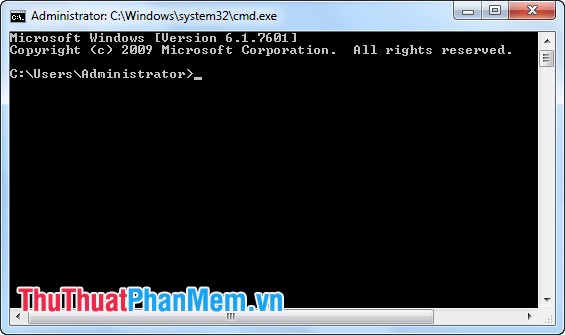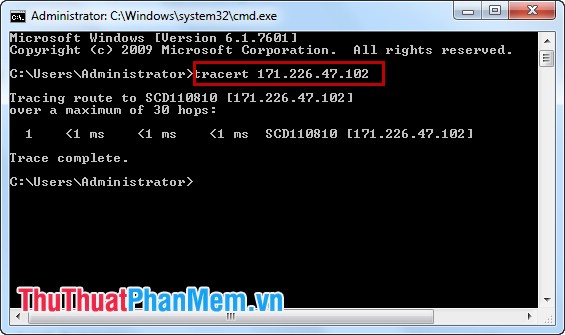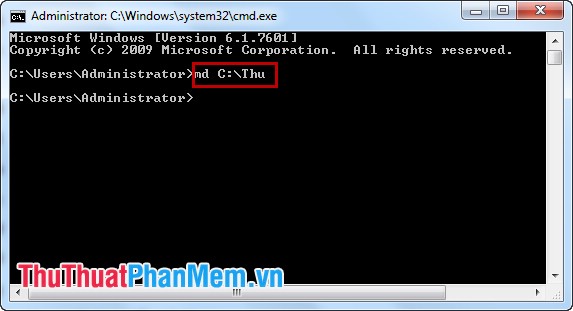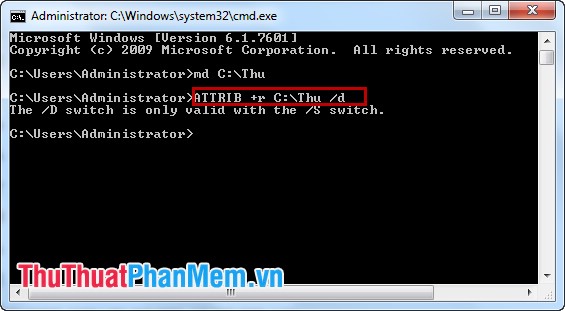Summary of common Run CMD commands
CMD - Command Prompt is an application used to execute commands available in Windows. CMD in Windows provides a lot of commands, these commands are used to do the job of operating the system from a command prompt interface instead of operating directly on the Windows interface. Here are some common CMD commands out of the many commands that Windows provides.
To open CMD window, you can open the Run dialog box ( Windows + R ) in Start . In the Run dialog box type cmd -> OK (or Enter ).

1. PING command.
Syntax: ping ip / host / [/ t] [/ a] [/ l] [/ n]
- Ip: IP address of the machine to be checked; host is the name of the computer to check the network connection (can use the IP address or the name of the computer).
- / t: used to keep the computer "ping" to the destination computer, press Ctrl + C to stop.
- / a: get the IP address from the computer name (host).
- / l: specify the width of the sending packet to check.
- / n: Specify the number of packets to send.
Use of the PING command: Use the Ping command to check if a computer is connected to the network. The PING command sends packets from your computer to the destination computer, you can determine the connection status or determine whether the computer is connected or not.
2. Tracert command.
Syntax: tracert ip / host
- ip / host: IP address / computer name.

Use the Tracert command: The command helps you see the path of packets from your computer to the destination computer, see which packets go through which servers or routers .
3. Netstat command.
Syntax: Netstat [/ a] [/ e] [/ n]
- / a: Displays all connections and ports that are listening.
- / e: Ethernet statistical information.
- / n: Display the address and port numbers.
You can refer to other parameters by typing Netstat /?
Use Netstat command: List outbound and outbound connections on your computer.
4. Ipconfig command.
Syntax: ipconfig / all

Uses: Display the IP configuration of the computer you are using (host name, IP address, DNS .).
5. Shutdown command.
Syntax (Windows 7):
- Shutdown : Shutdown -s -t [a]
- Start the computer: Shutdown -r -t [a]
+ a: shutdown time (units seconds).
Uses: Turn off and restart the computer.
6. The DIR command.
Syntax: DIR [drive:] [path] [filename]
- Path: Path to file, folder.
- Filename: File name.
Uses of DIR command: View files, folders.
7. DEL command.
Syntax: DEL [/ p] [/ f] [/ s] [/ q] [/ a [[:] attributes]] "file name to delete"
- / p: Display file information before deleting.
- / f: Delete files with read-only attribute.
- / s: Delete the file in all directories that contain it.
- / q: Delete without asking.
- / a [[:] attributes]: Delete by file attributes ( R : Read-only files, S : System files, H : Hidden files).
Delete all files *. *
Uses: Delete files.
8. COPY order.
Syntax: COPY "address to copy" "address of file copy" / y
- / y: Copy without asking.
Uses: Copy files from one folder to another in the computer.
9. RD command.
Syntax: RD / s / q "directory to delete"
- / s: Delete the entire directory.
- / q: Delete without asking.
Uses: The RD command helps you delete directories.
10. MD command.
Syntax: MD "path to save the file to create" "directory name to create"
For example, md "C: Thu" (creates a Thu folder in drive C).
Use: Create a new folder.

11. TASKKILL command.
Syntax: taskkill / f / im "application name" .exe .
For example taskkill / f / im Skype.exe (disable Skype application).
Uses: Turn off a running application.
12. REG ADD command.
Syntax: REG ADD KeyName [/ v ValueName] [/ t Type] [/ s Separator] [/ d Data] [/ f]
- KeyName: Path to the Key.
- / v ValueName: The value name to create.
- / t Type: Data type.
- / d Data: Value value.
Uses: Create, edit the Registry.
13. REG DELETE command.
Syntax: REG DELETE KeyName [/ v ValueName] [/ f]
- [/ v ValueName]: The value name to delete.
Uses: Delete the value in the Registry.
14. REGEDIT.EXT command.
Syntax: Regedit.exe / s "where the .reg file is not"
- / s: No need to ask.
Uses: Run the .reg file.
15. ATTRIB command.
Syntax: ATTRIB -a -s -h -r "file, directory" / s / d
or ATTRIB + a + s + h + r "files, directories" / s / d
- + sign: Add the attribute.
- Mark -: Remove the attribute.
- a: Archive (storage properties).
- s: System (system property).
- h: Hidden (hidden attribute).
- r: Read- only (attribute read only).
- / s: Perform with all files located in the directory and subfolders.
- / d: Set properties for directories and subfolders.

Uses: Set properties for files and folders.
Above are some of the most useful and common CMD commands. There are also other CMD commands that are less used but sometimes necessary, you can learn more.
 Adjust Autoplay option in Windows 7
Adjust Autoplay option in Windows 7 Prevent virus infection via USB
Prevent virus infection via USB Anti-virus method from USB via computer and vice versa
Anti-virus method from USB via computer and vice versa Instructions to change folder color - Folder
Instructions to change folder color - Folder Instructions to turn on, activate Hibernate mode
Instructions to turn on, activate Hibernate mode TeraCopy - Software to accelerate copying, moving data
TeraCopy - Software to accelerate copying, moving data